This chipset also features a 1080p playback processor, which allows HD movie playback without taxing the main processor and thus saving battery life. It has been designed using a 40nm process. There is also a version of this SoC supporting 3D displays. Named the Tegra 2 3D, this SoC uses a higher-clocked CPU (1.2GHz) and GPU.
Samsung Exynos 4210 1.2GHz

The Exynos 4210 uses the CortexA9 dual-core. It provides features such as dual-core CPU, high memory bandwidth, native triple display (2 WSVGA+1 HDMI out simultaneously), 1080p video decode and encode hardware, 3D graphics hardware and high-speed interfaces such as SATA and USB. The application processor also supports DDR-based eMMC 4.4 interface to increase the filesystem’s performance. Exynos 4210 uses ARM’s Mali-400 MP GPU. This graphics GPU is a move away from the PowerVR GPU of the Samsung Galaxy S.
Qualcomm Snapdragon MSM8260 1.5GHz
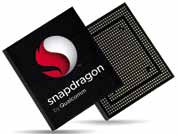
Also known as the Snapdragon S3, this SoC features dual-core Scorpion CPUs and an Adreno 220 GPU built using a 45nm process. It uses an ARMv7 instruction set and has single-channel 333MHz ISM/266 MHz LPDDR2 and 512kB L2 cache. The Adreno GPU has often been the epicentre of debates on whether benchmark scores can actually relate to real-world performance. Snapdragon processors are known to be better at multimedia related SIMD processes even though these score lower at benchmark tests. Snapdragon’s hardware acceleration of Adobe Flash and WebGL content delivers a smooth Web experience without the freezing or jerking seen if you have tasks running in the background.
This SoC also utilises a Harvard Superscalar architecture. It comes with embedded processor (supporting GSM, GPRS, EDGE, UMTS/WCDMA, HSDPA 7.2Mbps, HSUPA 5.76Mbps, HSPA+ 28Mbps/11Mbps, MBMS baseband), embedded seventh-generation gpsOne GPS module and gpsOneXTRA Assistance.
Apple A5 800MHz
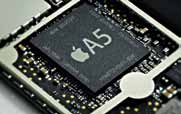
Designed by Apple and manufactured by Samsung using a 45nm process, this is the latest ARM processor from Apple featured in its iPhone 4S and iPad 2 devices. A5 is a chip based upon the dual-core ARM Cortex-A9 MPCore CPU with NEON SIMD accelerator and a dual-core PowerVR SGX543MP2 GPU clocked at 200 MHz. Apple lists the A5 to be clocked at 1 GHz on the iPad 2’s technical specifications page, though it can dynamically adjus its frequency to economise on battery life. The SoC also contains 512 MB of DDR2 memory clocked at 533 Mhz.
This chip includes an image signal processor unit that does advanced image post-processing such as face detection, white balance and automatic image stabilisation. Apple remains the only company to have a PowerVR SGX543 graphics solution on its SoC. This solution makes the A5 chip a lot more expensive than the rest.
TI OMAP4460 1.2GHz
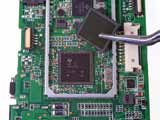
OMAP 4460 features dual-core ARM Cortex-A9 MPCore built using a 45nm process just like the Apple A5. One difference is that this OMAP is clocked much higher (1.2GHz) than the A5 (800MHz). TI’s datasheet specifies that OMA 4460 can handle up to 1.5 GHz but it’s clocked at 1.2 GHz to keep battery consumption within limits. The GPU featured here is the PowerVR SGX540, which helps in 2D and 3D graphics acceleration.
This SoC also features TI’s Smartflex technology that reduces power consumption by dynamically controlling the voltage, frequency and power based on the device activity, modes of operation and temperature. It can handle 1080p HD video as well as 1080p stereoscopic 3D video.
[/stextbox]
[stextbox id=”info” caption=”Upcoming silicon” bgcolor=”FFE0AB”]
The upcoming chips show a trend wherein performance alone ceases to be the driving factor. Mindsets have changed and battery life is just as important as performance. The new chips deliver by featuring low-power cores intended to take on the processing strain in stand-by mode.
Samsung Exynos 5250
Samsung’s Exynos 5250 packs two ARM Cortex-A15 processors clocked at 2 GHz. The dual-core chip is claimed to offer about twice the CPU performance of existing products that are equipped with a pair of ARM 1.5GHz Cortex-A9 processors. It is built using a a 32nm low-power high-K metal gate process.
TI OMAP5430
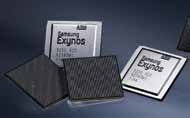
The flagship of TI’s new OMAP5 series, this 28nm SoC integrates two ARM Cortex-A15 MPCores that are clocked at 2 GHz each, two Cortex-M4 cores that are used as accelerators and CPUs that power the device when in low-power/standby mode. According to TI, the A15 architecture is about 50 per cent faster than the preceding A9 cores and the entire chip is about three times faster than the previous generation (OMAP4, which isn’t available yet).
The graphics engine is based on the PowerVR SGX544-MPx core as well as TI’s own 2D graphics engine. Users can run 1080p video at 60 frames per second and convert 2D 1080p video into S3D in 1080p in real time. TI claims that it has enough horsepower to support a 2D digital camera with up to 24-megapixels resolution or 12-megapixels 3D resolution. It also features support for up to 8GB DDR3 memory, USB 3.0, HDMI 1.4a (3D) and a display resolution of up to 2560×2048 pixels.
Intel Medfield Platform
Specificationsand benchmark results of Intel’s 32nm x86 Atom SoC have been leaked. According to the leak, the Medfieldtablet platform consists of a 1.6GHz CPU, 1 GB of DDR2 RAM, WiFi, Bluetooth, FM radio and some kind of GPU. The smartphone variant will probably be clocked slower. Also, there’s no mention of whether a GSM/LTE radio will be included in the chip.

Intel Medfield 1.6GHz currently scores around 10,500 in Caffeinemark3. For comparison, NVIDIA Tegra 2 scores around 7500, while Qual-comm Snapdragon MSM8260 scores 8000. However, this doesn’t seem to be fair comparison as the NVIDIA and Snapdragon chips have been out for a year.
[/stextbox]
[stextbox id=”info” caption=”Upcoming quads” bgcolor=”FFBE4D”]
Quad-core smartphones are guaranteed to be part of the next slew of high-end devices that aim to provide even greater performance improvement. Quad-core tablets have already been released, like the ASUS Eee Transformer Prime and the Lenovo IdeaPad K2.
Tegra 3
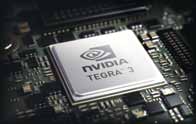
NVIDIA’s KAL-EL/Tegra 3 is a quad-core chip with a GPU that is claimed to be three times faster than Tegra 2. The overall performance is estimated to be fivetimes the performance of Tegra 2.
Project Kal-El processor implements a novel variable symmetric multiprocessing (vSMP) technology. vSMP includes a fifth CPU core (the ‘companion’ core) built using a special low-power silicon process that executes tasks at low frequency for active standby mode, music playback and video playback. All fiveCPU cores are identical ARM Cortex A9 CPUs, which are individually enabled and disabled based on the work load.
Exynos 4412
Samsung has provided support for Exynos 4412 on its development boards. The 4412 is similar to the Exynos 4212 and takes its que from the ARM Cortex A9 platform touting four CPU cores. Each core has a clock speed of 1.5 GHz like that of the 4212.
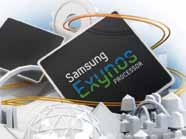
[/stextbox]









